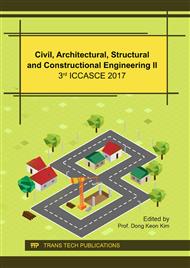p.152
p.159
p.166
p.173
p.179
p.183
p.197
p.202
p.213
Optimization of Multi-Layer Dome Structures for Enhanced Performance and Comfort of Protector Pads
Abstract:
A multi-material, multi-layer dome structure is proposed for desigining futuristic body protection pads that will address a safety issue prominent among the population of elderly people, patients, industry workers, military personnel, and sport players. Those people are prone to be subjected to blunt impacts due to falls, bullets, and blast waves, which can result in serious injuries, early death, and extremely high medical costs. Protector pads can effectively reduce impact force and prevent injuries in high-risk individuals. However, most currently available protection pads are bulky, heavy, or rigid. Therefore, new body protectors need to be developed to satisfy the requirements of wearing comfort, ease of fitting, ensured protection, and cost-effectiveness. Out of many different design ideas generated, the most promising ones were identified through an evaluation process based on various criteria such as performance, comfort, and manufacturability. One of those designs utilizes a dome-shaped top layer and thin fabric membrane component that is very strong in tension but flexible in bending. Such structure will make the pads excellent in dissipating shock energy by diverting normal impact force to lateral direction and minimizing the force directly transmitted to the weakest body parts. Through finite element analyses, the best combinations of materials and components were identified. The selected pad structure was optimized for light-weight and flexibility while keeping excellent resistance to the compression. The thickness of the shell element and the overall thickness of the whole pad were optimized for the same level of deflection and stress as other simple shell pads. The results showed that the dome-shaped structure could be a useful component of effective body protection pads through optimal combination of various materials and layers.
Info:
Periodical:
Pages:
179-182
Citation:
Online since:
February 2018
Authors:
Keywords:
Price:
Сopyright:
© 2018 Trans Tech Publications Ltd. All Rights Reserved
Share:
Citation:


